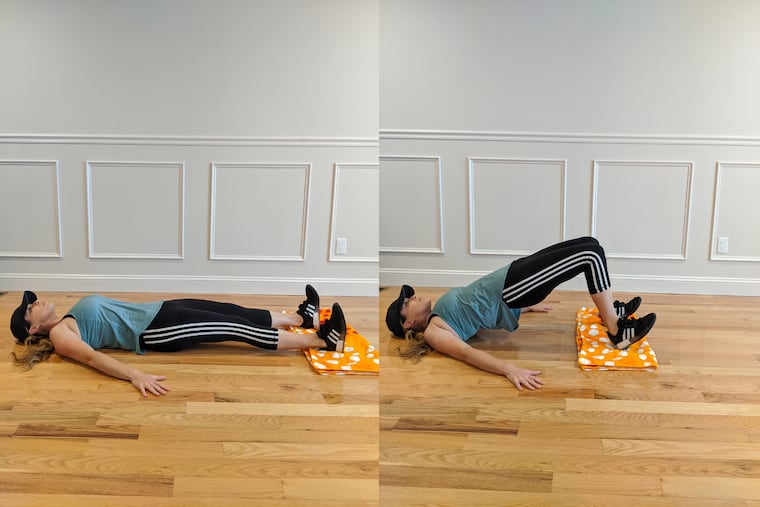Build a better butt with these four moves
We know a buff booty looks good. But it’s actually good for you, too. A powerful posterior is one of your greatest allies for staying safe, moving freely, and ensuring your independence as you age.

Are you spending enough time toning your tush? We know a buff booty looks good. But what many don’t realize is that it’s actually good for you, too.
The benefits of a powerful posterior extend far beyond filling out your favorite pair of jeans. In fact, it’s one of your greatest allies for staying safe, moving freely, and ensuring your independence as you age.
The gluteus maximus, medius, and minimus are a mighty trio that enable and enhance mobility, endurance, athletic performance, and pain prevention. But, too often, common lifestyle factors such as being sedentary, skipping lower-body exercises, and even sitting with your legs crossed for prolonged periods, cause these muscles to weaken and atrophy.
When this occurs, pelvic alignment shifts, posture becomes poor, and surrounding muscles and joints suffer from this structural instability. The discomfort associated with underdeveloped glutes is often felt in such areas as the lower back, hips, and knees.
By incorporating simple bottom-boosting exercises to your workout plan, you can rev up your rear and start reversing joint pain. Since the glutes and core work hand-in-hand to keep the body strong and healthy, these exercises will engage both areas.
Here are the top four glute exercises to include in your weekly workout. For best results, try practicing these two to three times a week. You will need a body towel.
Glute bridge
For this exercise, you’ll need your body towel and a smooth surface such as a tile or wood floor. Sit on the floor and lengthen the towel at your feet. Rest your heels on it, lie on your back, and extend the arms to the sides, palms down.
In one smooth motion, use your core and glute strength to pull the heels back toward the tush and elevate the hips to the sky. The body should form a straight line from the head through the knees. Squeeze the glutes here for two counts, then slowly glide the heels back to the starting stance. Repeat 10-12 times.
Clams
Begin on your side with the knees bent, legs together, and rest your head in your hand.
Slowly lift the top leg away from the bottom until you feel your hip muscle tighten. Hold here for five counts, then slowly lower back down without allowing the legs to make contact. Repeat 15 times, then switch sides.
Walking lunge
I am using a set of weights to increase the difficulty level, but you can perform this without weights, too. Simply rest your hands at your sides or on your hips.
Stand tall with the shoulders back, gaze forward, and core engaged. Take a large step forward with the left foot and lower into a lunge. The front knee should be hovering above the ankle while the back knee is under the hip.
Push through your front heel to stand and bring the feet together. Now step forward with the right foot. Continue this walking sequence for 20 total repetitions. To vary this exercise, you can perform a reverse walking lunge or a stationary lunge, as well.
Jump squat
This exercise is designed to fire up your heart rate and glutes. Start by standing with the feet hip-width apart. With all your weight in your heels, hinge back at the hips to lower into a squat and elevate the arms overhead to help gain momentum when jumping.
Explosively jump up, swinging the arms down and back. Land lightly on the feet to reduce impact to the joints. Repeat this for 10 counts. To increase the challenge, you can jump forward with each repetition, like a leapfrog.
Ashley Blake Greenblatt is a certified personal trainer and wellness coach in South Jersey. Learn more about her virtual training program at ashleyblakefitness.com.